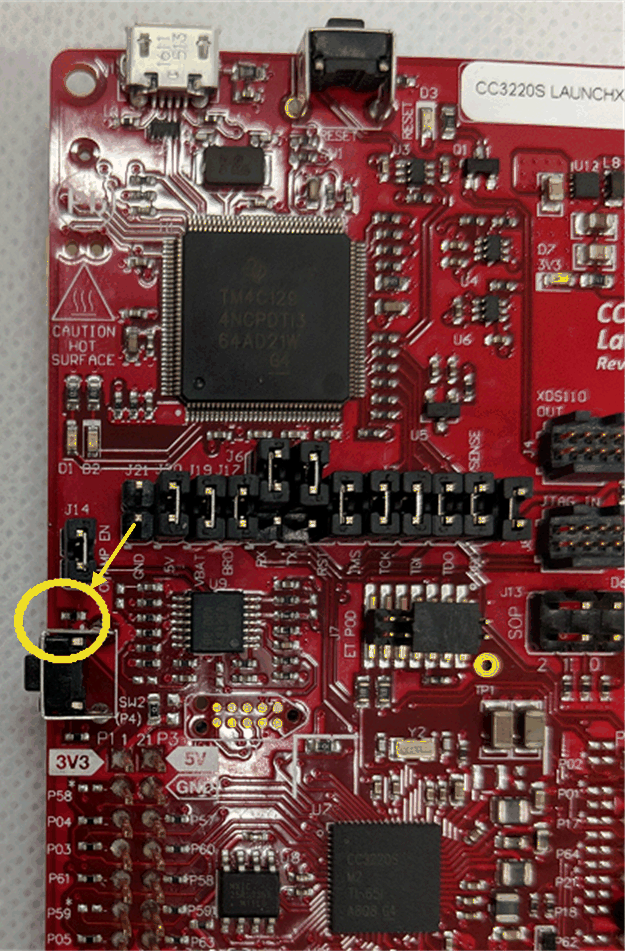TIDUE59A May 2018 – September 2020
- Description
- Resources
- Features
- Applications
- 1System Description
-
2System Overview
- 2.1 Block Diagram
- 2.2 Design Considerations
- 2.3 Highlighted Products
- 2.4 System Design Theory
- 3Hardware, Software, Testing Requirements, and Test Results
- 4Design Files
- 5Software Files
- 6Related Documentation
- 7Terminology
- 8About the Author
- 9Revision History
3.2.3.1 CC3220S
While measuring the power consumption of the CC3220S, the CC3220S and CC2640R2F LaunchPads were not stacked, to allow the devices to be powered separately. Instead, only the signals required for the NPI were connected between the boards using jumper wires. Resistor R141 on the CC3220S LaunchPad must also be removed. R141 is used to form a pull down on the input used by one of the CC3220S LaunchPad switches (SW2 on Rev. A). The resistor must be removed when measuring the power consumption on both the CC3220S and CC2640R2F LaunchPads, because the pin used by the switch is P4, which is used by the NPI and may increase power consumption while the NPI is idle (see Figure 3-12).
 Figure 3-12 R141 Location on CC3220S LaunchPad™
Figure 3-12 R141 Location on CC3220S LaunchPad™While powering the CC3220S LaunchPad from the DC power analyzer, the LaunchPad was configured according to the Battery Powering Only the CC3220 and U8 (Onboard Serial Flash) section of the CC3220 SimpleLink™ Wi-Fi® LaunchPad™ Development Kit Hardware User's Guide, and run standalone (flashed instead of the debugger), to let the power management policy for the MCU host stay enabled.
The power analyzer was configured with an output of 3.3-V DC while powering the CC3220S LaunchPad. A Netgear AT&T hotspot was used as the AP during the tests, with no other stations connected. Three different modes of operation that occur during normal application operation were measured, as follows:
- TIDC-01005 idle connected to AP (not including AP keep alive messages)
- TIDC-01005 receiving lock status request and sending lock state to cloud
- TIDC-01005 receiving lock/unlock command from cloud and running a PWM output to control the motor driver
When using the LaunchPad configuration from the Battery Powering Only the CC3220 and U8 (Onboard Serial Flash) section of the CC3220 SimpleLink™ Wi-Fi® LaunchPad™ Development Kit Hardware User's Guide, the back-channel UART is disconnected and debug prints are not available.